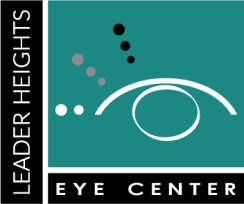Myopia (Nearsightedness) in York, PA
Quiz question: How far can the human eye see? Gold star for the correct answer (below).
The term “nearsighted” means that a person has blurred vision at distance but clear vision up close. This is indeed the usual situation for myopic people. Almost always, it happens because the eyeball is too long, and so light focuses in front of the retina, the “camera film” (remember that?) of the eye. Glasses, contact lenses or LASIK cause the light coming into the eye from the distance to be properly focused on the retina.
If you are myopic, you must be able to see 20/40 or better in each eye to legally drive without correction in Pennsylvania.
Severe myopia can cause problems beyond simply needing glasses. It can cause the retina to malfunction and scar and predisposes to retinal detachment, glaucoma, and cataracts.
Children who are myopic tend to get more so as they grow. This is a bad thing for two reasons. First, the more nearsighted you are, the more limitations you have in life. You may have trouble seeing at the beach or when swimming (Never swim in your contact lenses!). If your fire or burglar alarm goes off at night and you can’t find your glasses quickly, you may not be able to see to do what you need to do. Second, it causes the medical eye problems stated above. Because they tend to get worse over time, we like to examine myopic children at least annually.
Prevention
We would like to do something to keep myopia from getting worse in children. Here are some options and some things you may have heard about that don’t really work.
Atropine drops: We recommend that children who are getting worse at the rate of ½ diopter per year or more to be given very dilute atropine drops daily. The concentration is 1/100th the concentration of the commercially available drops, so the pupil doesn’t dilate and the eyes’ focusing power is preserved when using them. This has shown to cut the rate of change in half in most children.
Orthokeratology: This is a therapy in which one wears special hard contact lenses at night to flatten the corneas. It can cause some corneal problems, and our doctors don’t recommend it.
Spending time outdoors: Studies have shown that the more time children spend outdoors in sunlight, the less likely they are to become near-sighted. We aren’t sure what the mechanism is. Obviously, time spent outdoors is time not focusing up close, which could be a good thing, in a way (However, we’re not sure if you really want your kids reading less!). The most probable explanation may be that the violet part of the visual light spectrum blocks an enzyme in the eye that would otherwise make the eye lengthen. We find that you have to spend a lot of time outdoors to get a really good protective effect, two hours per day according to one study, but a little bit is way better than nothing. As we know, spending two hours per day outside in a northern American winter is not too realistic for most people.
Violet light: Maybe doing your reading by violet light may help slow down myopia. At least one study suggests that. You can get violet light bulbs on the internet.
Reducing focusing: Progression of myopia has something to do with prolonged, sustained focusing, as avid readers and serious students do. We have found that wearing reading glasses doesn’t make much of a difference, though. Perhaps, the atropine treatment works by affecting focusing. Screen time on devices held close could be a risk for progression, especially because one holds them closer than for a book, requiring extra focusing.
The degree to which time outside, reading, hand-held computer use, and violet light are factors is debated, and if you read articles and studies, you will find a lot of conflicting evidence and opinions. Getting outside as much as practicable and limiting close-up screen time are reasonable things to do.
The Epidemic
The incidence of myopia has absolutely exploded in recent decades. This is especially true in eastern Asia – there is a 96% incidence of myopia in Korean teens. In the US the rate of myopia doubled in the decade straddling 1980. This is a public health problem! Myopia causes a lot of eye diseases, as stated above.
The stereotype is true, there is a statistically-proven correlation between myopia and IQ.
Quiz answer: 2.54 million light-years, the distance to the Andromeda galaxy. You can see it in the eastern sky in the fall with the naked eye.

